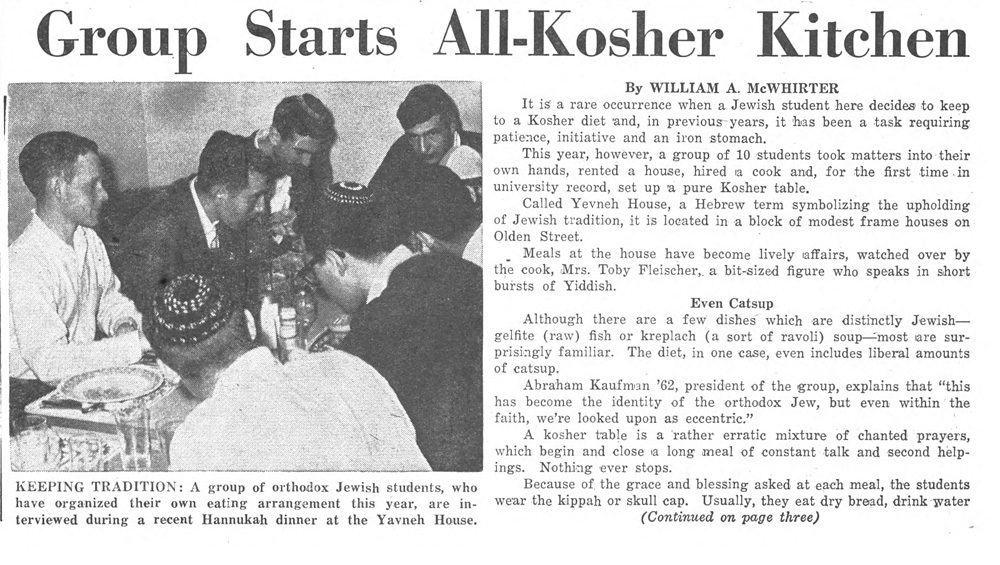Jews at Princeton University
FitzRandolph Gate (91 Nassau Street)

Newspaper article about Jewish Princeton University students founding the Yavneh House. Daily Princetonian, December 6, 1961
Jewish students first began attending Princeton University in the late 1800s, but they were a minority among the student population, and it was not until the mid-1920s that Princeton University appointed Jews to tenured faculty positions. Following the example of other university quotas to limit Jewish matriculation, the University had restrictive admissions policies from 1922-1950. Jewish enrollment was a small portion of the population and admittance did not always translate to acceptance.
The impact of World War II and the resulting influx of European scholars, including many Jews fleeing the Nazi regime, forced the University to change its policies. In 1948, a newly established Hillel held its first Friday night services. Antisemitism remained, however – in 1958, a number of Jewish students were denied membership to Princeton University’s eating clubs in what became nationally known as the “Dirty Bicker.” And the 1967 creation of Yavneh House, an off-campus kosher kitchen, religious space, and dorm for Orthodox students, was met with controversy.
Despite this, the number of Jewish students and professors continued to grow, and changes on campus began to signal increased tolerance. In 1964, the University abolished its chapel attendance requirement. And in 1971, Princeton became only the third university in the United States to have a kosher kitchen, after Yeshiva and Brandeis. Harold Shapiro ‘68 became Princeton University’s first Jewish president. Today, with a strong Jewish Studies program and a thriving Center for Jewish Life (Hillel), Jewish students experience inclusion, as well as tolerance.